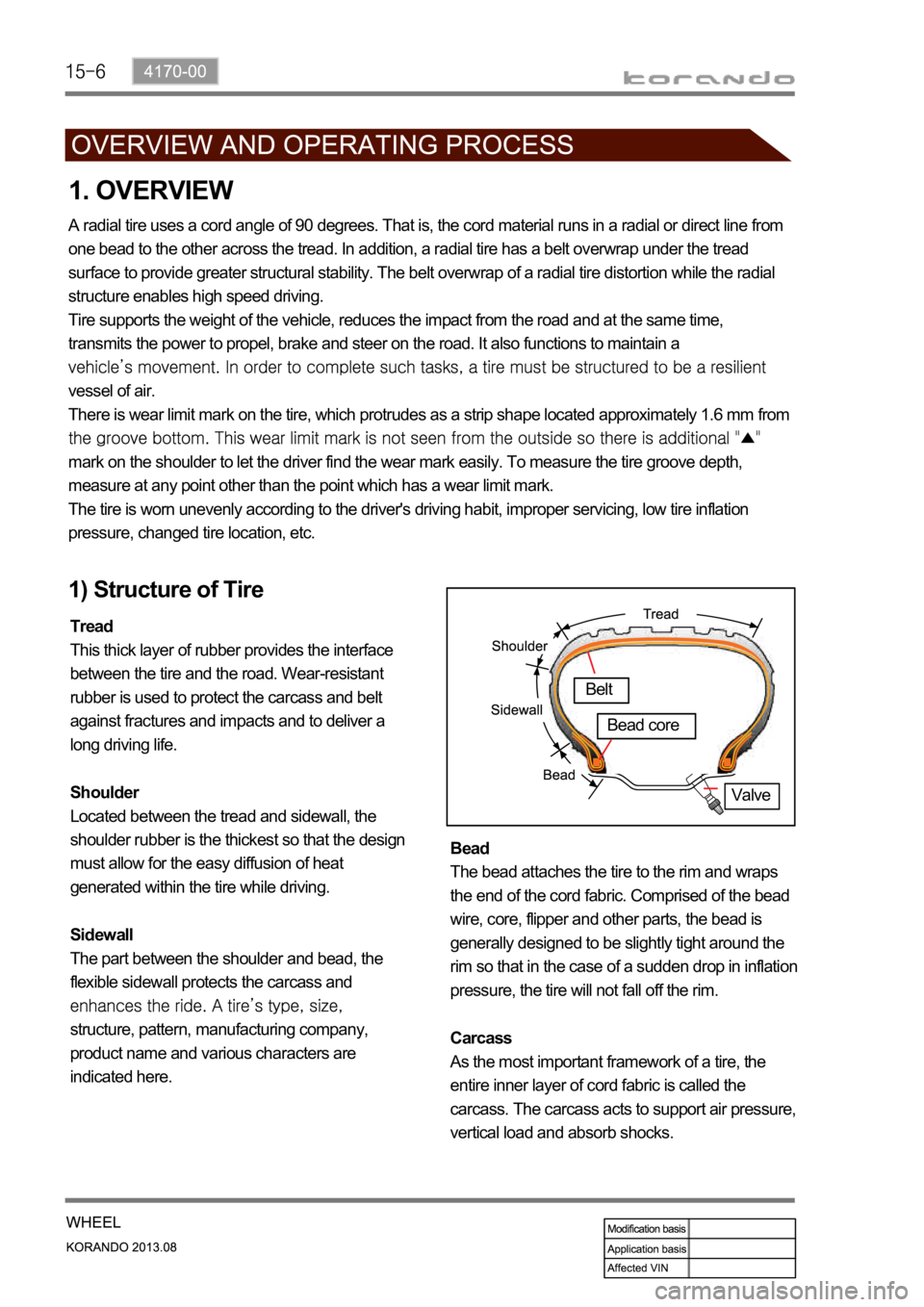Page 887 of 1336

Luminous intensity is a measure for the amount of light which passes through the unit area per
time unit. The SI unit of luminous intensity is the candela (cd), an SI base unit. -Luminous Intensity
Luminance describes the amount of light that passes through or is emitted from a particular area,
and falls within a given solid angle. It is measured in sb or nt. -Luminance
This indicates the amount of light reaching a given area. Measuring unit is lux (lx) and it is not
directly proportional to the brightness of the area as the reflection rate is not included. -Intensity of illumination
The LED stands for "Light Emitting Diode" or "Luminescent Diode." LED is a semiconductor diode
that emits incoherent narrow-spectrum light when electrically biased in the forward direction of the
p-n junction, as in the common LED circuit. In short, it is an element that converts electric signals
into light signals. Yellow, blue, red and white LEDs are currently available.
The followings are the advantages of LED.
It is not glaring and doesn't have short circuit unlike the conventional lamps.
It is semi-permanent and doesn't generate heat.
Its power consumption is much lower than those of conventional bulbs. -
-
Pin No. Specification
Operating voltage 9 V to 16 V
Load Max. 200 mA (relay load)
Operating temperature
Storage temperature
Mounting location Top center of inner side of windshield glass
2. AUTOMATIC LIGHT SENSOR SPECIFICATIONS
Page 889 of 1336
Rear side
Rear combination lamp
- Rear combination lamp design and its function changed
- Tail lamp (stop lamp) changed to LED type
Backup lamp
Turn signal
lamp
Stop/tail lamp
Rear fog
light
Tail lamp
Stop lamp,
Rear fog
light (EU)
Turn signal
lamp
Backup lamp
Stop lamp
Page 892 of 1336
8310-00
Rear combination lamp
Rear side
License plate lampReflex reflector lamp
High mounted stop lamp
Vehicle with spoilerVehicle without spoiler
Tail lamp
Stop lamp,
Rear fog
light (EU)Turn signal
lamp
Backup lamp
Stop lamp
Page 895 of 1336
(3) Auto light (LIN)
The auto light sensor unit is installed to the back side of the ECM mirror located upper center of the
windshield, and detects the illuminance change. The BCM communicates with the auto light sensor
when the ignition is turned on, and turns on or off the tail lamp and headlamp automatically according to
the signals from the sensor when the multifunction switch is set to AUTO light.
The BCM communicates with the rain sensor even if the multifunction switch is in tail lamp.
Auto light switch Automatic light sensor unit
Page 1158 of 1336

1. OVERVIEW
A radial tire uses a cord angle of 90 degrees. That is, the cord material runs in a radial or direct line from
one bead to the other across the tread. In addition, a radial tire has a belt overwrap under the tread
surface to provide greater structural stability. The belt overwrap of a radial tire distortion while the radial
structure enables high speed driving.
Tire supports the weight of the vehicle, reduces the impact from the road and at the same time,
transmits the power to propel, brake and steer on the road. It also functions to maintain a
vessel of air.
There is wear limit mark on the tire, which protrudes as a strip shape located approximately 1.6 mm from
mark on the shoulder to let the driver find the wear mark easily. To measure the tire groove depth,
measure at any point other than the point which has a wear limit mark.
The tire is worn unevenly according to the driver's driving habit, improper servicing, low tire inflation
pressure, changed tire location, etc.
1) Structure of Tire
Tread
This thick layer of rubber provides the interface
between the tire and the road. Wear-resistant
rubber is used to protect the carcass and belt
against fractures and impacts and to deliver a
long driving life.
Shoulder
Located between the tread and sidewall, the
shoulder rubber is the thickest so that the design
must allow for the easy diffusion of heat
generated within the tire while driving.
Sidewall
The part between the shoulder and bead, the
flexible sidewall protects the carcass and
structure, pattern, manufacturing company,
product name and various characters are
indicated here. Bead
The bead attaches the tire to the rim and wraps
the end of the cord fabric. Comprised of the bead
wire, core, flipper and other parts, the bead is
generally designed to be slightly tight around the
rim so that in the case of a sudden drop in inflation
pressure, the tire will not fall off the rim.
Carcass
As the most important framework of a tire, the
entire inner layer of cord fabric is called the
carcass. The carcass acts to support air pressure,
vertical load and absorb shocks.
Valve
Belt
Bead core